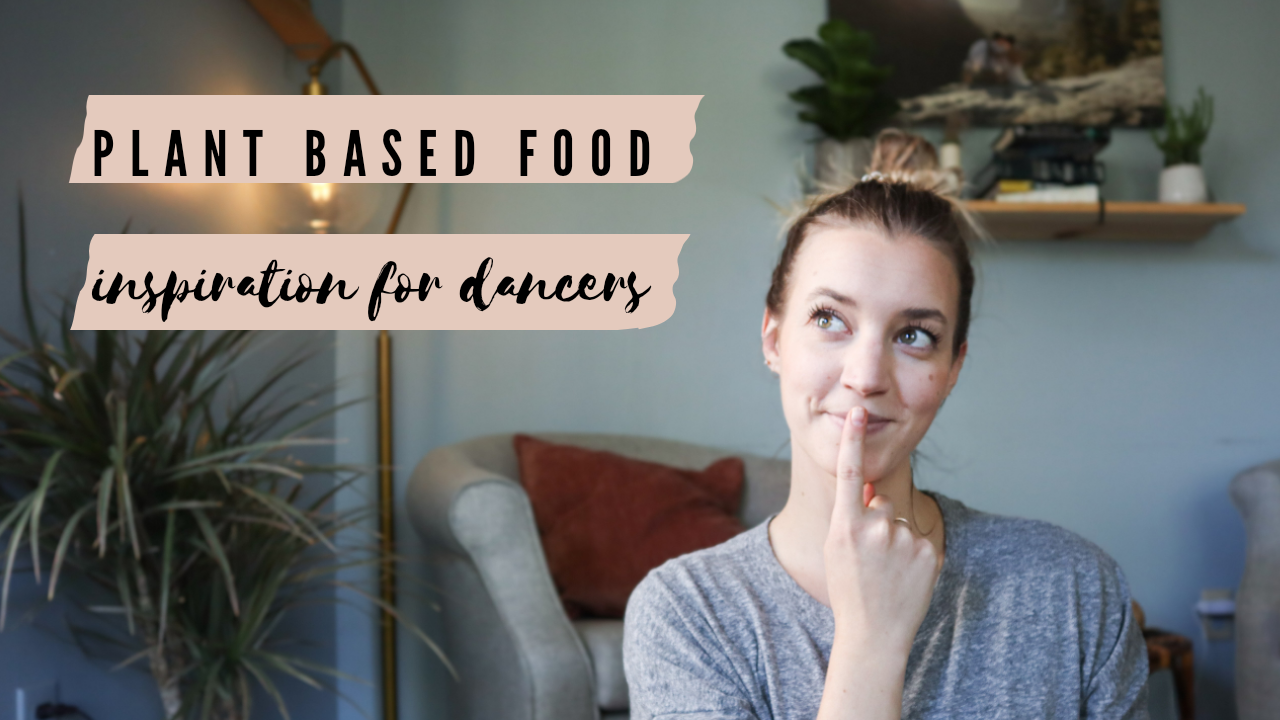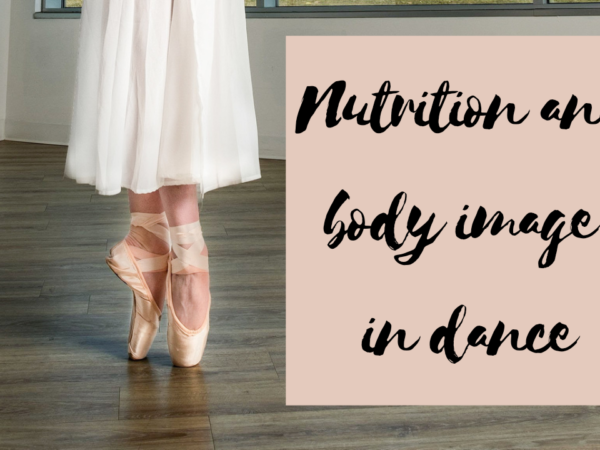It can be tricky when going plant based, so I wanted to put together plant based food inspiration for dancers. When I first went vegan while I was in my last year of training professionally to become a ballet dancer, I was having a hard time finding information on how a dancer, or athlete, should go about it. It is important to consider caloric intake, macronutrient distribution, among other nutritional concerns as well as knowing how to recreate favorite meals and find new foods that your palate and your body will love.
A little recap
If you want to check out my last blog post about important considerations that dancers should think about before going vegan or vegetarian, check it out here. Going plant based doesn’t mean that you have to be restrictive of macronutrients, calories, processed foods, or meal times, but there are variations of each that are. I always encourage dancers to strive for well rounded, balanced meals and snacks regardless of if they eat animal products or not.
As I stated in my last blog, going plant based is not for every dancer. Since we all have different bodies, our foods and meals that we eat will differ as well. For example, I rarely eat animal products because I do not like them and I enjoy plant based foods, I have other dance friends who love having animal foods as a part of their diet, and others who thrive somewhere in between. What matters is that you listen to your body and find what works best for you.
Let’s talk macronutrients
If you remember from my posts about macronutrients (carbohydrates, protein, and fat), you will know that each macronutrient is important for dancers to include in their meals and snacks to make sure that your meals and snacks will keep you fueled during dance. I’m going to just briefly recap their functions here, but if you want more information, I would highly encourage you to check out those posts or my videos that go along with them.
Carbohydrates
Carbohydrates are important for dancers to have throughout their day because they are one of the main sources of energy for our body and our brain. They help our bodies physically and mentally get through long days in the studio and help to make sure that we don’t start using muscle as fuel. Carbohydrates are also an important source of fiber, which is important for our digestion.
Simple carbohydrates, like fruit, are broken down quickly by the body are broken down quickly by the body. Many refined carbohydrates like white rice, white bread, and certain cereals, crackers, and other packaged foods can also be in the category. Because our body can use them quickly for fuel, they do not provide much staying power when eaten alone. I always suggest that dancers pair simple carbohydrates with a source of protein or fast for longer lasting, stable energy levels. One example would be having a piece of fruit with nut butter, rather than having the fruit by itself.
Complex carbohydrates provide lasting energy and fiber. These are found in whole grains like oats, quinoa, bulgar, brown rice, whole wheat, buckwheat, amaranth, couscous, and farro. Almost all vegetables are in this category as well. Everything from leafy greens, to cruciferous vegetables, starchy vegetables, and more. Beans and legumes like black beans, chickpeas, and lentils are also a great source of carbohydrates (and protein, but more on that in a second). Complex carbohydrates are great to have before dance to give your body energy, and after dance to replenish your energy. Complex carbohydrates can be great during the dance day, but some dancers might find that their food might not feel digested after eating a lot of them on a short break.
Protein
Proteins are known as the building block of our body, and it also plays a role in many of the chemical processes in our body. It is important for growing and maintaining muscle, supporting our joints, maintaining fluid balance, and so much more. Sometimes people think that animal sources are the only way to get in enough protein, but this is so far from being true!
Beans and legumes, like I mentioned earlier, are a great source of complex carbohydrates and protein! Tofu, tempeh and edamame are also great sources of plant based protein along with nuts and seeds. Whole grains like whole wheat and quinoa and even vegetables like kale, broccoli, and mushrooms have protein in them. There are many companies that make plant based protein options that are great mock meat alternatives if you are craving a burger, sausage, chicken, or other meat product. Many companies make fortified foods like plant based protein powder, snack bars, cereals, and non dairy products that can also have sources of protein that can especially be useful for dancers to incorporate if they struggle with eating enough protein rich foods. For vegetarians, eggs, cottage cheese, yogurt, milk, and cheese are great sources of protein as well.
Protein is an important macronutrient for dancers to consume throughout a day in the studio, but it is especially important to incorporate into meals and snacks after dancing to help your body recover.
Fat
Last but certainly not least is fat. I know many dancers who hear the word “fat” and want to shy away from it, but fat is so important as a source of energy, to help us absorb vitamins, create hormones, and regulate our body temperature, as well as fat helps us to boost our brain function.
There are so many great plant sources of fat including nuts and seeds like almonds, walnuts, pumpkin seeds, flax seeds, hemp seeds, chia seeds, cashew and peanuts. Other sources include avocados, olives, olive oil and other plant oils, coconut, and even dark chocolate in a moderate amount. Vegetarians can find fat in eggs and dairy products.
With fat, you might find it easier for your body to digest higher fat foods before and after dance, but that doesn’t mean that you can’t incorporate some sources through the dance day to keep you full and fueled!
Tying it all together for meals and snacks – plant based food inspiration for dancers
For any dancer, plant based or not, planning your meals and snacks can be an important component in making sure your body stays energized and fueled for a long day of dance. When going plant based, some dancers might find it challenging in putting macronutrients together to form balanced meals and snacks. So let’s break it down!
At breakfast, think of having complex carbohydrates with protein and a bit of fat. Oatmeal with fruit, nuts and seeds, a smoothie with protein powder and nut butter, tofu scramble with veggies and toast, avocado toast with chickpeas, or a yogurt parfait with fruit, granola, nuts and seeds are all great options. Lunch can be tricky due to the time and duration of your break in between rehearsals, so tapping into intuitive eating can be really helpful. Many dancers find success with a lunch that might feel light on the stomach, but is packed with calories for energy. A quinoa or pasta salad with olive oil dressing, a peanut butter and honey sandwich, hummus, avocado, and veggie wrap, and rice with edamame and avocado and sesame seeds are a few easy to make and easy to eat options.
For dancers, snacks are really important to keep your energy up throughout the day – trail mix, fruit and nut butter, yogurt and granola, hummus and crackers, dried fruit, or a protein bar are great snacks to explore. Some dancers like to bring a larger lunch and split it up between breaks, others like to eat more during a longer break and smaller snacks in smaller breaks. Whatever works best for you!
Finally, for dinner, we want to focus on replenishing our energy stores so our body can repair itself and get us ready for another day. After a long day of classes and rehearsals, our bodies might crave something hearty like a plant based chili with avocado and crackers, roasted vegetables and potatoes with beans or tempeh and a creamy sauce, pasta, a burrito bowl, plant based burger, or curry. The options are endless! Remember to pack in complex carbohydrates, protein and fat!
Nutritional concerns to watch out for
If you have never gone completely plant based, it can be a learning process in finding what foods fuel you, what meals and snacks help you feel your best, and what foods you enjoy. It is important to find balance with food, so if going vegan or vegetarian feels restrictive or unsatisfying, try adding a few animal based foods back in and see if that impacts how you feel.
Sometimes, it might be easier to change what you eat by taking it one step at a time rather than making a huge change all at once. Having a slower transition might make it easier on your digestion, energy levels, and on your brain to get used to a different way of shopping and cooking.
More than anything, remember to listen to your body. Putting a label to what you eat or sticking to a set of food rules will not make you healthy. Exploring what fuels your body and makes you feel your best is one of the most important steps you can make in keeping your body thriving in dance.
If you want to check out my video on plant based food inspiration for dancers, check it out here
https://youtu.be/J6hZFXFmwG0




